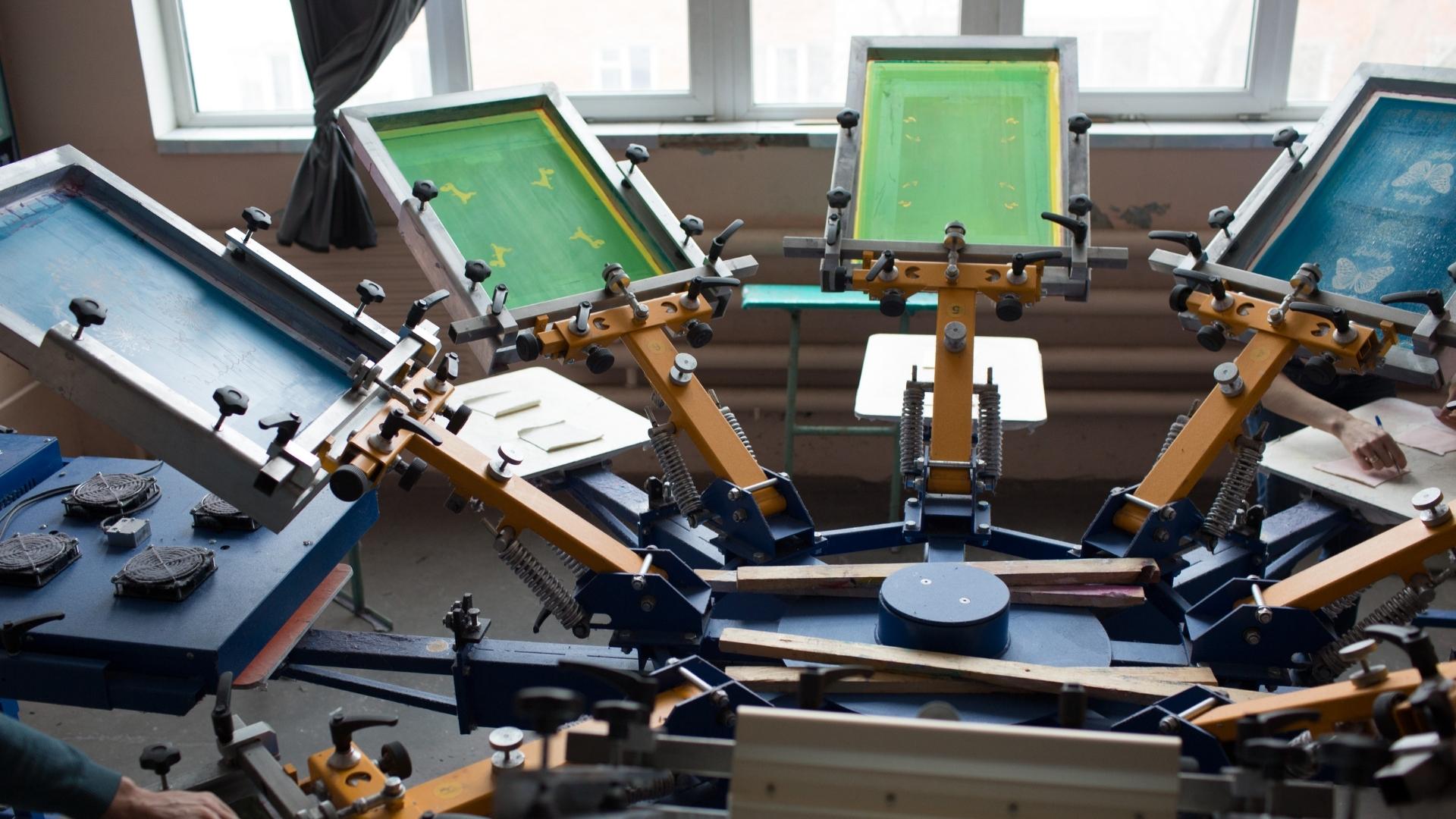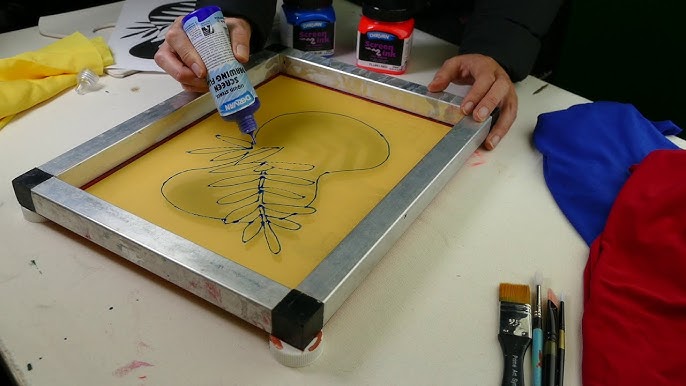The Crucial Guide to Understanding Screen Printing and Its Versatile Makes use of
Screen printing has an abundant background that dates back to old times, evolving into an innovative method utilized across numerous industries today. This guide explores the details of the screen printing process, detailing its applications in home, fashion, and marketing décor - 10:9 Design Embroidery. Recognizing these fundamentals can open up creative capacity for both commercial and creative tasks. The following areas will expose necessary tips and strategies to enhance one's screen printing undertakings
The Background of Screen Printing
Although screen printing has origins that map back centuries, its advancement mirrors the technical and artistic advancements of various cultures. Coming from old China, the method was initially utilized for enhancing fabrics and later spread to Japan, where it ended up being essential to Ukiyo-e woodblock printing. The approach shifted to Europe in the 18th century, where it acquired appeal among craftsmens and commercial printers. The creation of image emulsion in the 20th century changed screen printing, permitting more complex designs and higher efficiency. Musicians like Andy Warhol even more propelled its popularity, making use of the medium to create renowned jobs that blended commercialism and art. By the late 20th century, screen printing had established itself as a versatile technique, utilized in fashion, marketing, and great art. Today, it proceeds to advance, incorporating electronic technology and expanding its applications across numerous sectors.
The Screen Printing Refine Explained
Screen printing transforms imaginative visions into substantial layouts via a collection of exact actions. A picture is developed and then transferred onto a screen, typically made of great mesh material extended over a framework. A light-sensitive emulsion is put on the screen, which is exposed to light, solidifying in locations not covered by the photo. After washing out the unhardened solution, a stencil is formed.
Next off, the screen is put over the substratum, whether it be fabric, paper, or an additional product. Ink is then pressed with the open locations of the stencil making use of a squeegee, transferring the layout onto the substrate below. This process can be duplicated for several shades, calling for separate displays for every color. The published product is treated using warmth to guarantee the ink adheres properly, resulting in a durable, lively layout all set for usage.
Kinds of Screen Printing Techniques

Furthermore, specialty strategies, such as discharge screen printing, remove dye from the fabric to produce softer prints, while foil screen printing applies metal foil to attain a glossy coating (10:9 Design Texas). Each strategy uses distinctive qualities, providing to different innovative requirements and manufacturing scales, inevitably increasing the opportunities within the screen printing domain name
Applications of Screen Printing in Numerous Industries

In addition, the signage and marketing sectors use screen printing for developing appealing displays and banners. This method allows for strong colors and elaborate styles that record interest. In electronic devices, screen printing is employed for using conductive inks to circuit boards, necessary for component links. The home design industry embraces screen printing to generate distinct styles on textiles and wall art. Generally, screen printing acts as a critical device throughout diverse fields, enhancing products with individualized and visually enticing graphics.
Tips for Effective Screen Printing Projects
While embarking on a screen printing project, mindful focus to information can significantly enhance the last end result. Choosing top notch products is crucial; this includes the screen, inks, and substrates. Utilizing appropriate mesh counts can influence ink deposition and information resolution. Prep work is similarly important; comprehensive cleaning of displays and appropriate exposure times ensure crisp prints.
Next, accurate enrollment is critical for multi-color prints. Utilizing alignment tools can help accomplish accurate layering. Furthermore, screening prints on scrap materials website prior to manufacturing assists determine possible problems without throwing away sources.

Often Asked Inquiries
What Materials Are Best for Screen Printing on Fabric?
Cotton and polyester blends are excellent for screen printing on textile because of their sturdiness and ink absorption. In addition, specialty materials like silk or canvas can produce unique appearances and coatings, boosting the total style top quality.
Exactly how Do I Tidy and Maintain Screen Printing Tools?
To clean up and maintain screen printing devices, one should on a regular basis wash displays with suitable solvents, inspect squeegees for wear, lubricate relocating parts, and store all items in a completely dry, dust-free environment to lengthen their life expectancy.
What Are the Environmental Influences of Screen Printing?
Screen printing can have considerable environmental influences, including chemical waste from solvents and inks, water use during cleaning processes, and power usage. Sustainable practices and environment-friendly materials are important for reducing these negative impacts.
Can Screen Printing Be Done in the house Properly?
Screen printing can be successfully done at home with the appropriate materials and strategies. Enthusiasts can produce high quality prints, though success depends on their skill level, devices, and understanding of the procedure entailed.
What Are the Expenses Related To Starting a Display Printing Service?

Beginning a screen printing organization entails expenses for tools, materials, and workspace. Preliminary expenses generally vary from a couple of hundred to a number of thousand bucks, depending on the scale, quality of machinery, and wanted production ability.
Screen printing has an abundant history that dates back to ancient times, advancing into a sophisticated method used throughout different industries today. Another strategy, rotating screen printing, uses round screens, helping with constant printing on textile rolls, consequently enhancing efficiency for massive productions. Furthermore, specialty methods, such as discharge screen printing, get rid of dye from the material to create softer prints, while foil screen printing uses metallic foil to achieve a glossy coating. In the fashion market, screen printing is extensively used to produce vivid designs on clothing, making it possible for brands to display their special styles. Cotton and polyester blends are optimal for screen printing on fabric due to their sturdiness and ink absorption.